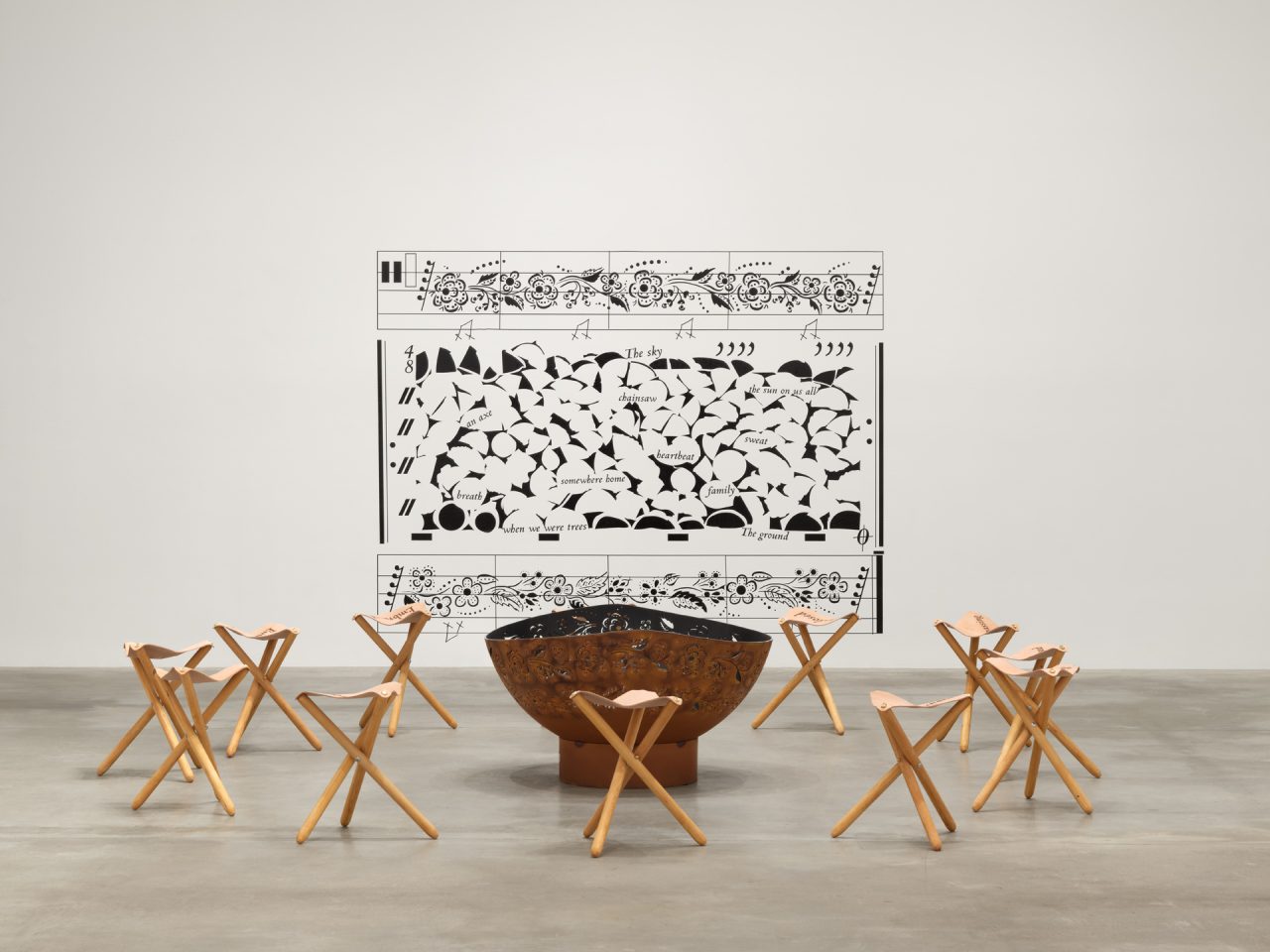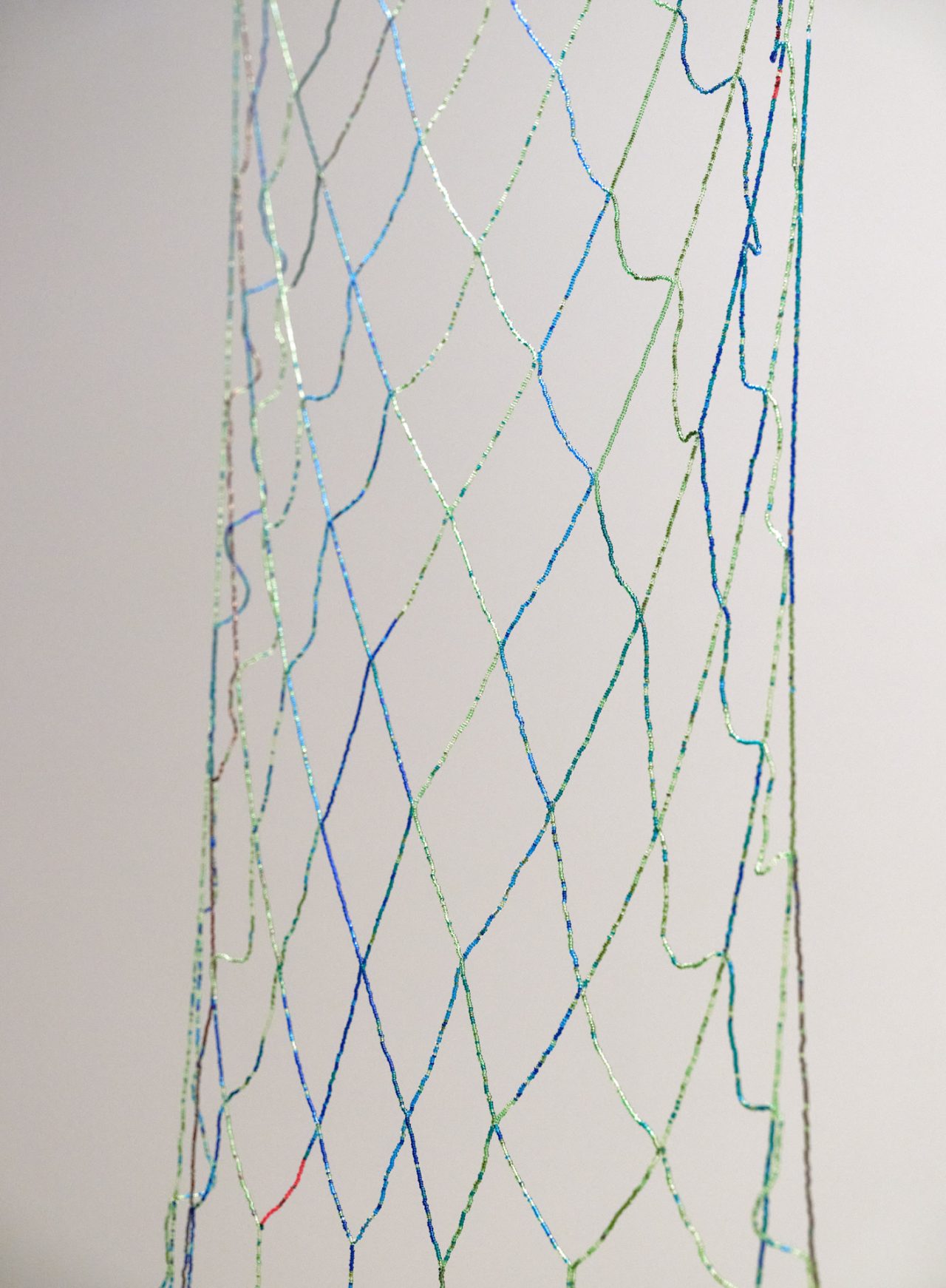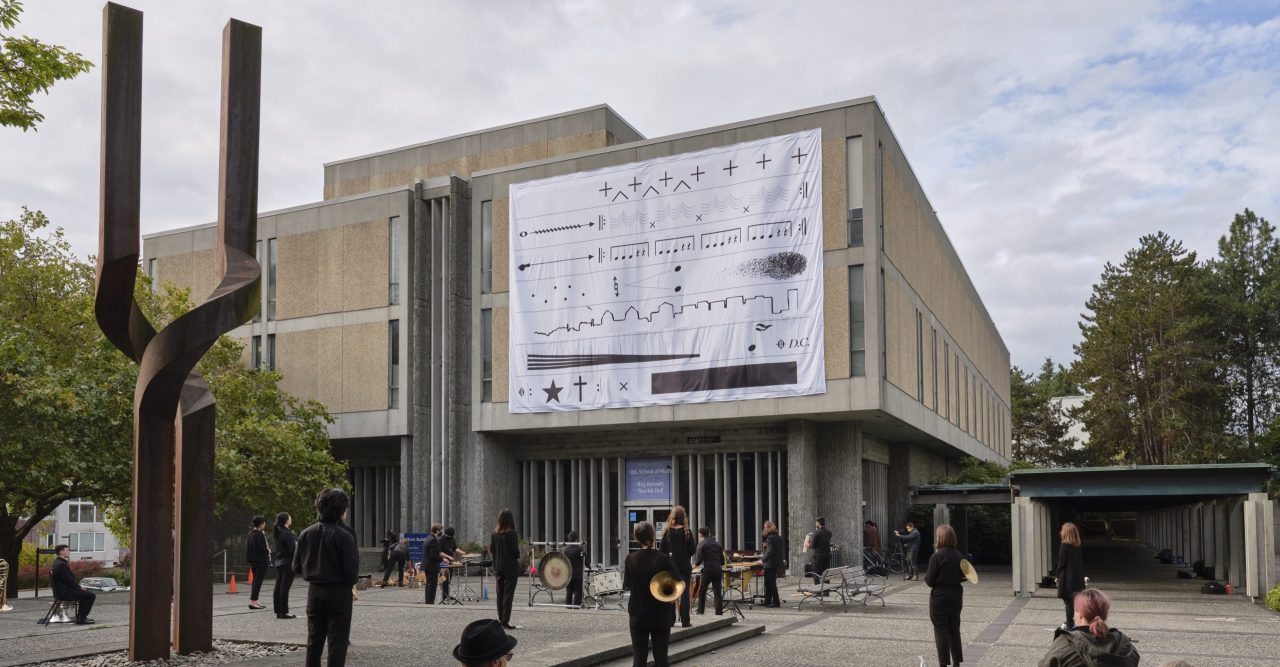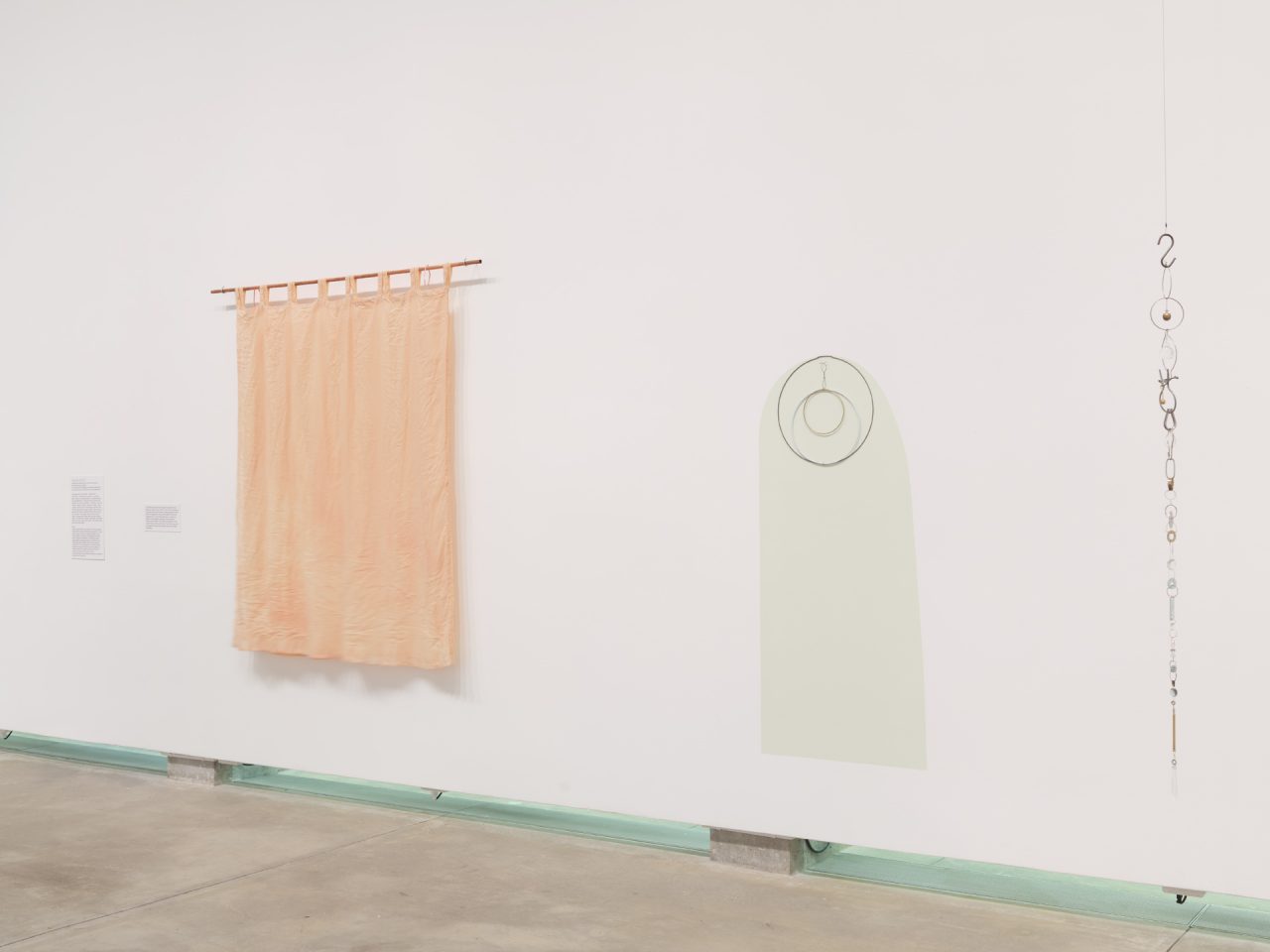Wednesday 20 Oct 2021 at 12:30 pm
Ladner Clock Tower and Library Gardens, UBC
The Score: Ladner Clock Tower Carillon Performance
-
Athena Loredo
Athena Loredo is a composer based in Vancouver. She grew up in Newfoundland and obtained a BMus (Hons) in composition from Memorial University. Currently, Loredo is completing a Master’s in Composition at the University of British Columbia. Her compositional style is influenced by the manipulation of musical fragments. From quoting Bach, Prokofiev and Dvorak in a symphonic poem to creating variations on a Mexican folk song, Loredo explores combinations of timbres and melodic fragments, reworking music to create something new.
Read More
As The Score Research Cluster enters its second year, the Belkin and the School of Music are revisiting performances done as part of Soundings: An Exhibition in Five Parts from the fall of 2020.
Olivia Whetung’s Strata (2018), included in the Soundings exhibition, invited visitors to pour different coloured beads from individual small jars into a mason jar, creating a layering of sounds as each bead joined the growing pile. Once the container was filled, the artist turned the amalgam of beads into a new piece – a beadwork for each gallery the Soundings exhibition has presented at, each work hanging in succession. Building from the interactions of viewers and beaded by the artist herself, the work disrupts the notion of an artwork as a complete and finished product. Whetung forces us to question the temporality of the piece to insist upon its existence along a timeline outside of the traditional exhibition cycle. The creation of the beadwork, at first dictated by the random ordering of pours from visitors, is then reconfigured to encapsulate the traces of their divergent temporalities. Each beadwork is reordered into a unique visual network, its pattern appearing as a notation to be read, played and interpreted. In the fall of 2020, a series of performances by students from the UBC School of Music interpreted and activated Whetung’s beadworks as scores themselves. Sasha Kow, Athena Loredo and Joseph Stacey “played” these works through the Ladner Clock Tower’s carillon, the chiming mechanism that emulates the sounds of bells. To read more about this performance and listen to a recording, visit Soundings: Olivia Whetung and the Ladner Tower Carillon.
Athena Loredo’s Strata Tempora (2020) is an interpretation of Olivia Whetung’s Strata as a musical score, performed through the carillon and a brass ensemble at the Ladner Clock Tower. Initially performed when much of UBC campus was shut down or quieted due to the COVID-19 pandemic, the work will be performed again in October 2021, when the rhythms of more typical years at UBC are present on campus.
The Score Research Cluster
Through the performance and study of unconventional scores by Indigenous artists, the UBC Score Research Cluster engages with decolonization by challenging existing sonic, physical and conceptual frames of Indigenous and settler–colonial knowledge. The research-creation team consists of an interdisciplinary network of scholars as part of UBC Research Excellence Clusters, attending to relationships between art, site and sound. This cluster was established through participation with the exhibition Soundings: An Exhibition in Five Parts held at the Belkin from 8 September to 6 December 2020.
Photo (above): Rachel Topham Photography
-
Athena Loredo
Athena Loredo is a composer based in Vancouver. She grew up in Newfoundland and obtained a BMus (Hons) in composition from Memorial University. Currently, Loredo is completing a Master’s in Composition at the University of British Columbia. Her compositional style is influenced by the manipulation of musical fragments. From quoting Bach, Prokofiev and Dvorak in a symphonic poem to creating variations on a Mexican folk song, Loredo explores combinations of timbres and melodic fragments, reworking music to create something new.
Read More
Related
-
Research Project
2019 - Ongoing
The Score: Performing, Listening and Decolonization

Through the performance and study of unconventional scores by Indigenous artists, the Score Research Cluster engages with decolonization by challenging existing sonic, physical and conceptual frames of Indigenous and settler–colonial knowledge.
[more] -
Event
Wednesday 21 Oct 2020 at 3 pm
Wednesday 28 Oct 2020 at 3 pm
Wednesday 25 Nov 2020 at 2 pm
Wednesday 2 Dec 2020 at 3 pm
Sunday 6 Dec 2020 at 3 pm
Soundings: Olivia Whetung and the Ladner Clock Tower Carillon

Whetung invites gallery visitors to pour different coloured beads from individual small jars into one large vessel, creating a layering of sounds as each bead joins the growing pile. Once the container is filled, the artist turns the amalgam of beads into an entirely new piece – a rectangular beadwork unique to the Belkin’s iteration of the exhibition.
[more] -
Exhibition
8 Sep – 6 Dec 2020
Soundings: An Exhibition in Five Parts

Soundings: An Exhibition in Five Parts features newly commissioned scores, performances, videos, sculptures and sound by Indigenous and other artists who respond to the question, How can a score be a call and tool for decolonization? Unfolding in a sequence of five parts, the scores take the form of beadwork, videos, objects, graphic notation, historical belongings and written instructions. During the exhibition, these scores are activated at specific moments by musicians, dancers, performers and members of the public, gradually filling the gallery and surrounding public spaces with sound and action. Curated by Candice Hopkins and Dylan Robinson, Soundings is cumulative, limning an ever-changing community of artworks, shared experience and engagement. Shifting and evolving, it gains new artists and players in each location. For this iteration on Musqueam territory, the Belkin has collaborated with UBC's Musqueam Language Program in partnership with the Musqueam Indian Band Language and Culture Department; School of Music; Chan Centre for Performing Arts; First Nations House of Learning and Museum of Anthropology to support the production of new artworks and performances by local artists.
[more] -
News
10 Dec 2020
Soundings: Marking Time
 [more]
[more] -
Event
Sunday 8 Nov 2020 at 3 pm
Soundings: Camille Georgeson-Usher and Rachel Kiyo Iwaasa

through, in between oceans part 2 by Camille Georgeson-Usher is a beaded installation, completed during the isolation of the Spring 2020 pandemic. The artist worked from home in Toronto, a departure from her intention to spend several months on Galiano Island, BC, where she was raised.
[more] -
Event
10 Sep 2020
Soundings: Diamond Point and Coastal Wolf Pack

Forming two continuous lines on this part of the traditional, ancestral and unceded territory of the xʷməθkʷəy̓əm (Musqueam) people, wəɬ m̓i ct q̓pəθət tə ɬniməɬ by Diamond Point presents two images repeating in a sequence hung on the lampposts along UBC’s Main Mall from James Hart’s Reconciliation Pole to the plaza just beyond the Belkin.
[more] -
Event
Soundings: Germaine Koh

Germaine Koh’s drum is made from one of the cedar tree stumps she first brought to site for use as physical distancing stations. She worked with Belkin staff during Summer 2020 to develop COVID-19 safety and visitor interaction protocols that recognized the importance of collective care and teamwork.
[more] -
Event
8 Sep 2020
Soundings: Greg Staats
 [more]
[more] -
Event
8 Sep 2020
Soundings: Peter Morin and Parmela Attariwala

In Part One of NDN Love Songs, Peter Morin offers a score of instructions to musicians presented alongside seven video portraits. Part Two presents videos of recordings of previous iterations of the Soundings exhibition at Agnes Etherington Art Centre, Gund Gallery and Kitchener-Waterloo Art Gallery. In Part Three, Parmela Attariwala performs the score on the violin at the Belkin.
[more] -
Event
8 Oct 2020 at 4 pm
Soundings: Raven Chacon and Symphonic Wind Ensemble

Around the corner from the Belkin Gallery, Raven Chacon's score American Ledger (No. 1) hangs on the exterior of the Music Building at 6361 Memorial Road, UBC. The score incorporates a traditional musical score with Navajo iconography and is to be performed by "many players with sustaining and percussive instruments, voices, coins, axe and wood, a police whistle and the striking of a match."
[more] -
Event
Monday 30 Nov 2020 at 4:30 pm
Soundings: Tania Willard and Melody Courage

Surrounded/Surrounding includes a wood-burning fire bowl, etched leather camp stools and a life-sized rendering of the artist’s wood pile in a graphic score. Written on the split logs and the spaces between them are references to the breathing, beating labour that creates what a fire needs, as well as the trees, sun, sky and ground that surrounds and creates all else.
[more] -
Event
Dec 2020
Soundings: UBC Contemporary Players Respond

In lieu of a public concert at the Belkin as has occurred in recent years, musicians from UBC Contemporary Players chose a work by a Canadian composer to perform in an empty gallery, responding to the works of Soundings: An Exhibition in Five Parts. Videos of these performances are shared here for reference, research, and enjoyment in perpetuity. Soundings asks how a score can be a call and a tool for decolonization. The exhibition's corresponding investigations take at their centre questions of embodiment and subjectivity, of calls and responses. What are the practical matters of embodied decolonization, and how can we practice them? How does embodiment facilitate unlearning, unknowing, and the visioning of Indigenous ontologies?
[more] -
News
31 Aug 2020
Soundings: Reading Room
The following is a list of resources related to Soundings: An Exhibition in Five Parts. The list of resources compiled here is not an official recommendation, but is rather a list of suggested readings compiled by Public Programs and graduate student researchers at the Belkin Art Gallery. These readings are intended to provide additional context for the exhibition and act as springboards for further research or questions stemming from the exhibition, artists, and works involved.
[more] -
News
30 Nov 2020
Belkin x CRWR: Soundings

In response to Soundings: An Exhibition in Five Parts, a group of Creative Writing graduate students at the University of British Columbia have made a series of activities for visitors to take part in during their visits to the gallery. Thinking through the idea of a score as a call to respond, these activities range from sound walks to reflective worksheets to small group workshops.
[more]